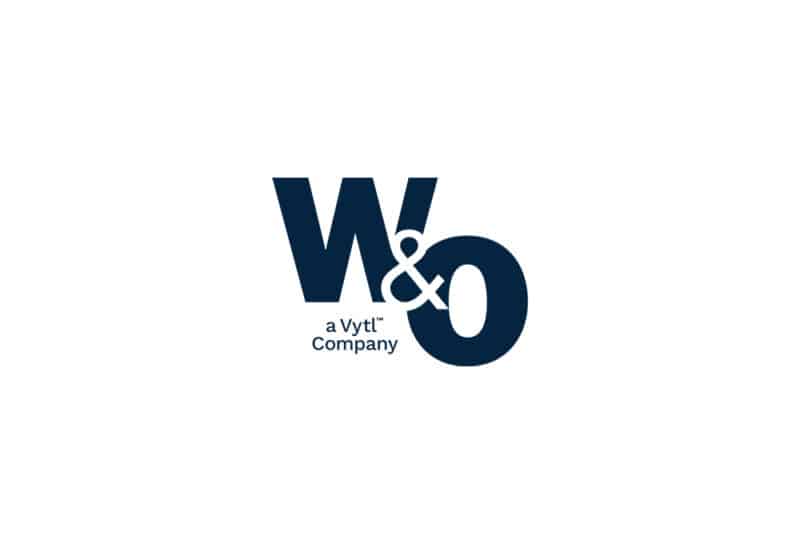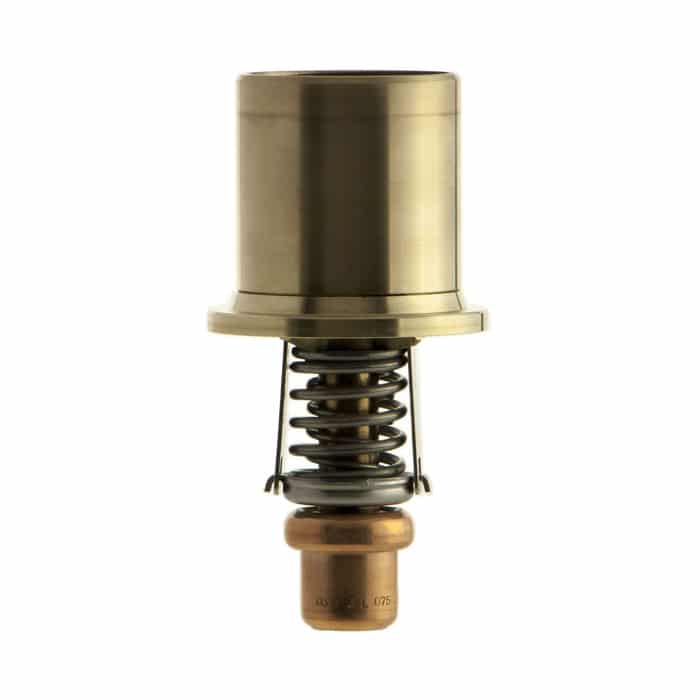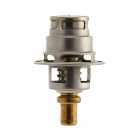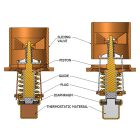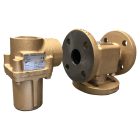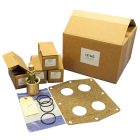
Valves
AMOT Elements for model C AMOT valves
AMOT elements are basically the driving force behind each C valve. The valve elements regulate the opening and closing of the valve at a set temperature.
| Temperature range | 18 ... 113 °C |
|---|---|
| For valve type | C valves |
| Operating principle | Wax expansion |
| Element types | 1125X, 10765X, 1125P, 10765P, 9778R, 44844X, 3362U, 10765U |
| Element construction options | Standard, Nickel plated, Short stroke and high overtemp., Salt water (SS), Special standard |
| Seal material options | Buna N/Nitrile, Viton, Neoprene |
The AMOT elements are basically the heart of the valve. The valve elements regulate the opening and closing of the valve at a set temperature. A special wax is placed deep in the bottom ‘nut’ of the AMOT element. The expansion of the wax will help slide the element and control the flow. This part is connected with these sidebars that are inside this barrel. The sidebars inside the barrel together make the sliding valve.
The piston is very robust and nearly impossible to pull by hand. All AMOT elements can be calibrated and adjusted at the required set temperature.
The sliding of the element piston will control where the flow is going based on what is happening with the temperature of the medium. The element is closed when the media is “cold” or below the nominal temperature. When the wax gets heated, it will expand and push the sliding valve out, which will cause the AMOT element to open.
How does the element work inside a valve:
- Crack open
Element closed below Crack Open Temperature. - 50% open position
Element is 50% open at Control Temperature. - Full open
Element 100% open above Full Open Temperature.
The crack open temperature of AMOT elements for valves may variate between 12 and 115 degrees celsius. For example, when an element is set at 60°C, it will crack open at 55°C. The maximum temperature is a fascinating setting, and sometimes we forget about it. With extended heat, the wax may start losing its characteristics. In short, above the maximum temperature, the wax inside the valve element is burned. Burning the wax, we lose some physical features that allow expanding at a specific temperature.
Available AMOT elements for C valve:
- Element type: 1125X, Element construction: Standard, Seal material: Buna N/Nitrile
- Element type: 10765X, Element construction: Standard, Seal material: Buna N/Nitrile
- Element type: 1125P, Element construction: Nickel plated, Seal material: Viton
- Element type: 10765P, Element construction: Nickel plated, Seal material: Viton
- Element type: 1125X, Element construction: Standard, Seal material: Viton
- Element type: 10765X, Element construction: Standard, Seal material: Viton
- Element type: 1125P, Element construction: Nickel plated, Seal material: Buna N/Nitrile
- Element type: 10765P, Element construction: Nickel plated., Seal material: Buna N/Nitrile
- Element type: 9778R, Element construction: Short stroke, high overtemp., Seal material: Viton
- Element type: 44844X, Element construction: Salt water (SS), Seal material: Viton
- Element type: 3362U, Element construction: Special standard, Seal material: Neoprene
- Element type: 10765U, Element construction: Special standard, Seal material: Neoprene
| Datasheet for AMOT C valves and spares | AMOT-Model-C-Thermostatic-Control-Valve |
|---|
Request an offer
RECEIVE A QUOTE WITHIN 3 HOURS ON BUSINESS DAYS

Do you want to know more?
Contact Edward! He can help you pick the perfect element for your C valve.

Edward van Doorn
Sales Director Europe

Product catalog
- Download our product catalog
- Download
